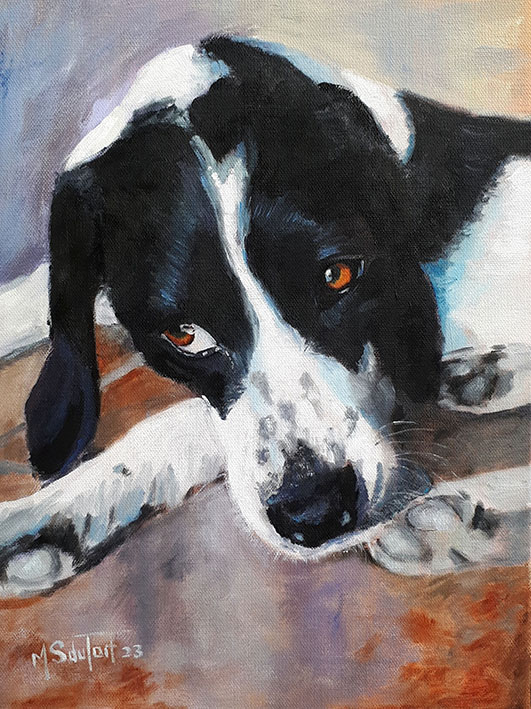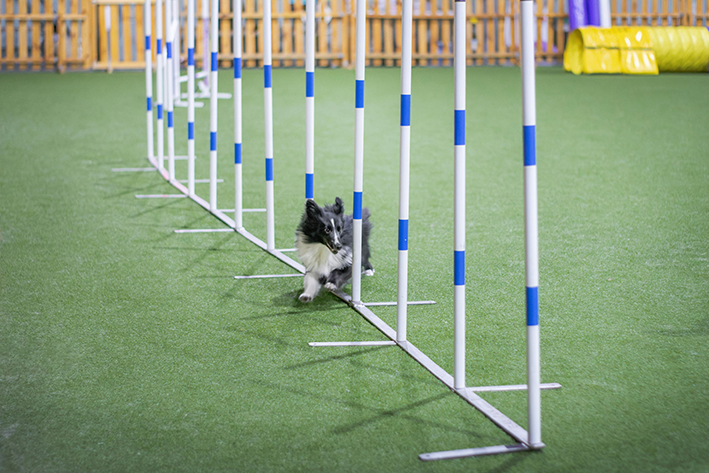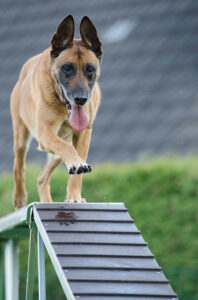Before you start with Agility! What to consider and do?
Are YOU a good candidate for agility?
- If you love to run with your dog.
- If you can accept the fact that any mistake the dog makes will always be your fault.
- If you will always celebrate with your dog each and every round on the course, regardless of mistakes.
- If you are always willing to learn from other people and their dogs, then you are the perfect candidate for dog agility.
Is your DOG a good candidate for agility?
Many people believe that the Border Collie is the only agility dog. Well that is not so. I have seen many Border Collie owners with extremely fast dogs being disqualified time after time, only because they have no control over their dogs. If your dog is healthy and without any hip or other joint problems, there is no reason why you cannot do agility with your dog.
In fact, doing agility with your dog, whatever the breed, is very good for the dog. It gives your dog physical exercise of all the muscles, it is mentally stimulating and it is great fun for your dog to interact with his human. Just do not have unrealistic expectations from your dog. A St Bernard will not be the fastest dog! Some breeds are not build for that, but you still train them the exercises without doing competitions. It is about having fun with your dog!
Characteristics of the “right” agility dog
If you want to do agility, not just for fun, but also to compete in competitions, then you want the “right” dog.
You have to look at the following characteristics
- Energy – the willingness to run – You will probably be better off with a dog with a high energy level. He must be willing to run with you even when it is hot. Agility is a very fast and active sport. Although it is not always the fastest dog that wins, it will be to your advantage if your dog can cover ground very fast. If your dog is a trotter and not a runner, you will have to work extra hard to encourage him to run.
- Wanting to please you – Agility requires teamwork and your dog needs to be willing to work with and for you. It requires excellent focus from the dog to be aware of every body signal that you send out. Some breeds are more independent and like to think for themselves, where as some dogs might seem to be unwilling to work until you start training them.
- Prey drive – If your dog has prey drive (the desire to chase something that moves) you can have a winner. You want a dog that is more interested in chasing you than in sniffing around.
- The Confident dog – Most dogs will gain confidence while training agility. I have seen many dogs growing in confidence, but it takes extra confidence to learn to perform each obstacle well and without fear as well as handling the environment of trials.
More points to consider for dog agility training:
- Trust other people – Your dog should trust you, but he should also trust other people. He will have to interact with many different people during classes and at trials. You do not want a dog that stops in the middle of a course to bark at the judge.
- Socialized with other dogs – At training classes and at trials there are always many other dogs around, therefor your dog needs to be well socialized with other dogs. You should be in control of your dog at all times. If your dog is not so friendly towards other dogs, he should always be on lead except when it is his turn to run.
- Health, age and weight – As mentioned before, your dog should be in perfect health and not over-weight. There is tremendous pressure on the dog’s joints when he performs the obstacles and it is very bad for him if he has to carry extra weight around.
Positive reinforcement training
The traditional training methods were based on correcting undesired behaviours, whereas positive reinforcement is based on reinforcing desired behaviours. All agility training must be correction free. If you are going to base your agility training on corrections, you are going to slow your dog down.
When he makes a mistake, pretend it did not happen, and try again, giving the signals or commands more clearly. Every desired behaviour should be rewarded using verbal praise together with either a treat or a toy. I use the clicker with all of my training and I encourage others in my classes to also use it.
The foundation of obedience
If you really want to do well in agility, you need to lay a solid foundation of obedience. Your dog needs to make split-second decisions while running the course, following body cues and verbal commands.
The following is a list of the most important obedience commands that your dog should be well trained in and what you do in dog obedience classes:
- The recall – When you run the course with your dog, he is off lead. If he sees another dog or human he wants to go to, he needs to come back immediately when you give the “come” command.
- The sit – Most handlers put their dogs in a sit at the start line. Most dogs learn this command very fast.
- The down – Some handlers put their dogs in a down at the start and also on the table. A very fast down on the table is very important. I’ve seen many people loosing their first or second places just because their dogs took several seconds to down on the table.
- The (agility) stay – The agility stay is more like the wait command. You put your dog in either a sit or down stay, while you lead out to the second or third obstacle. This gives you a head start. When you are ready you give the signal or command for the dog to come. Your dog’s stay needs to be very reliable.
- The heel – For agility purposes you need to train your dog to heel on both sides.
- The release word – Most people use the word “okay” for a release word. You will use it when calling your dog from the start line or from the table.
If your basic obedience foundation is solid, and you have an energetic dog that loves to please you and you are willing to put in the effort to train him with positive methods, you have a winning combination.




